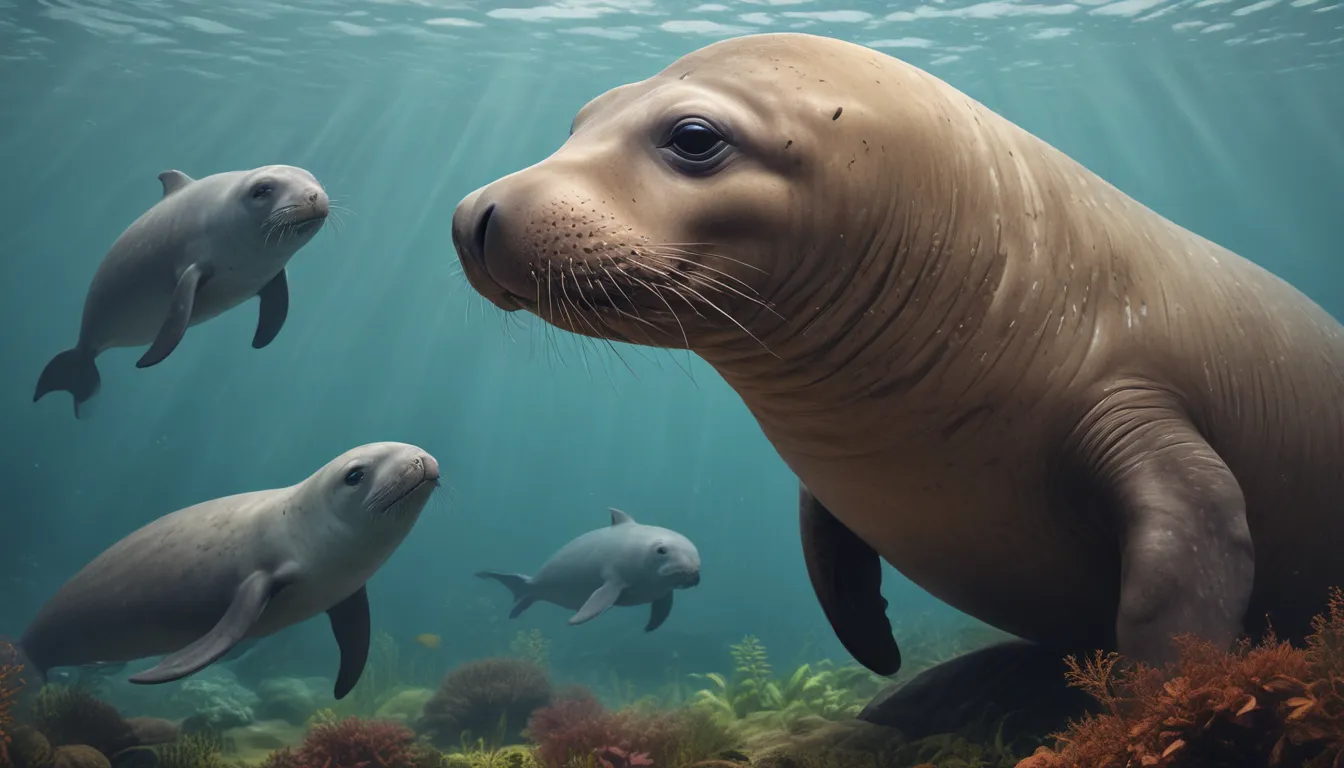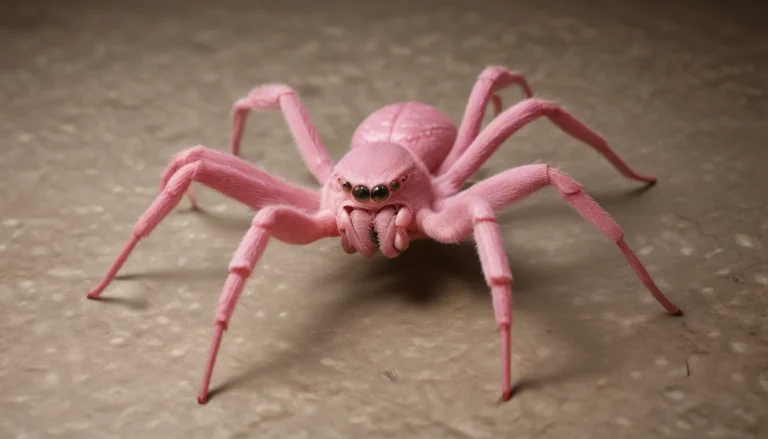The pictures we use in our articles might not show exactly what the words say. We choose these pictures to make you interested in reading more. The pictures work together with the words but don’t take their place. The words still tell you the important facts.
Pinnipeds, also known as "fin-footed" mammals, are a captivating group of animals that thrive in both aquatic and terrestrial environments. From seals to sea lions and walruses, these marine mammals exhibit remarkable adaptations that have intrigued researchers and conservationists worldwide. In this article, we will delve into 16 intriguing facts about pinnipeds, shedding light on their unique biology, behavior, and vital role in the ecosystem.
Understanding Pinnipeds: An Overview
Pinnipeds, such as seals and sea lions, are equipped with flippers for swimming and are skilled hunters both in water and on land. Their highly social nature and conservation challenges highlight the importance of protecting these fascinating marine mammals. With their thick blubber and distinctive molting process, pinnipeds have adapted to thrive in diverse habitats worldwide, showcasing impressive parental care and ecotourism potential.
The Specialized Limbs of Pinnipeds
One of the defining features of pinnipeds is their flipper-like limbs, which enable them to navigate through water gracefully and support movement on land.
Diving Abilities of Pinnipeds
Pinnipeds exhibit remarkable diving abilities due to their streamlined bodies and efficient oxygen storage capacity. Some species, like the Weddell seal, can hold their breath for up to 80 minutes and dive to depths of 2,000 feet.
The Social Nature of Pinnipeds
Many pinniped species form large colonies for breeding, rest, and molting, providing protection against predators and facilitating important social interactions.
Vocalizations of Pinnipeds
Pinnipeds communicate through a range of vocalizations, including barks, roars, trills, and clicks, crucial for establishing territories, attracting mates, and maintaining group cohesion.
The Role of Blubber in Pinnipeds
Blubber, a specialized fat layer, helps pinnipeds regulate body temperature in cold waters and serves as an energy reserve during food scarcity.
Hunting Skills of Pinnipeds
Pinnipeds are skilled hunters, leveraging their senses and agility to feed on fish, squid, and other marine invertebrates in water and on land.
Molting Process of Pinnipeds
Pinnipeds undergo an annual molting process to maintain healthy skin and fur, shedding old fur to reveal a new coat.
Adaptation to Sleeping in Water
Pinnipeds can sleep with half of their brain at a time, allowing them to rest while maintaining alertness to surrounding dangers.
Teeth Adaptations in Pinnipeds
Pinnipeds have specialized teeth based on their diet, with some species possessing sharp teeth for tearing prey and others having flatter teeth for crushing hard-shelled prey.
Remarkable Swimming Abilities of Pinnipeds
With streamlined bodies and powerful flippers, pinnipeds are adept swimmers, achieving impressive speeds and agile maneuvers in the water.
Acute Sense of Hearing in Pinnipeds
Pinnipeds rely on their ears adapted for detecting sounds underwater to locate prey, communicate, and navigate their environment effectively.
Parental Care Among Pinnipeds
Female pinnipeds exhibit strong maternal instincts, nurturing and protecting their young until they can fend for themselves.
Global Distribution of Pinnipeds
Pinnipeds inhabit diverse habitats worldwide, from polar regions to temperate and tropical waters, with some species venturing into freshwater environments.
Cultural Representations of Pinnipeds
Throughout history, pinnipeds have been celebrated in art, literature, and folklore, symbolizing strength, adaptability, and grace.
Conservation Challenges Faced by Pinnipeds
Many pinniped populations are under threat from habitat loss, pollution, climate change, and overfishing, necessitating conservation efforts to safeguard these magnificent creatures and their ecosystems.
Ecotourism Potential of Pinnipeds
Pinnipeds attract tourists globally due to their charismatic nature and captivating behaviors, offering opportunities for responsible ecotourism to support conservation and raise awareness about habitat protection.
Conclusion: Celebrating the Wonders of Pinnipeds
In conclusion, pinnipeds are extraordinary marine mammals that continue to inspire awe and fascination among researchers and nature enthusiasts worldwide. From their diverse species to their incredible adaptations, these animals play a vital role in marine ecosystems and conservation efforts. By understanding and appreciating the 16 facts about pinnipeds explored in this article, we gain valuable insights into the diversity and adaptability of the natural world.
FAQs: Exploring More about Pinnipeds
-
What are pinnipeds?
Pinnipeds are marine mammals, including seals, sea lions, and walruses, adapted for life in both aquatic and terrestrial environments. -
Where do pinnipeds live?
Pinnipeds can be found in various habitats worldwide, from polar regions to coastal areas, islands, and sometimes even freshwater environments. -
What do pinnipeds eat?
Pinniped diets vary by species and habitat, primarily consisting of fish, squid, and crustaceans, with some species consuming other marine mammals. -
How do pinnipeds move on land?
Pinnipeds use their flippers to propel themselves on land, displaying surprising agility and efficiency in their movements. -
Do pinnipeds communicate with each other?
Yes, pinnipeds communicate through vocalizations, body postures, and gestures vital for their social interactions and reproductive behaviors. -
Are pinnipeds endangered?
Certain pinniped species face endangerment due to habitat loss, pollution, and overhunting, emphasizing the need for conservation measures. -
How long do pinnipeds live?
Pinnipeds have varying lifespans by species, typically living 15 to 30 years in the wild, with some individuals in captivity reaching longer ages. -
Do pinnipeds have predators?
In marine environments, pinnipeds face predation from larger marine mammals like killer whales and sharks, and on land, from predators such as polar bears and birds of prey. -
Can pinnipeds be trained?
Yes, pinnipeds have been successfully trained for various purposes, showcasing their intelligence and adaptability in settings such as aquariums and research studies. -
How do pinnipeds reproduce?
Pinnipeds reproduce through internal fertilization, with mating typically occurring in water and females giving birth to live young on land or ice, nurturing and caring for them until independence.
Dive deeper into the captivating world of pinnipeds to discover more about their intriguing adaptations, behaviors, and habitats, and marvel at the wonders of these remarkable marine mammals.
Our commitment to delivering credible and engaging content ensures you gain valuable insights and appreciation for the remarkable diversity of the natural world. Trust in our dedication to quality and authenticity as you explore, learn, and celebrate the beauty of nature with us.






